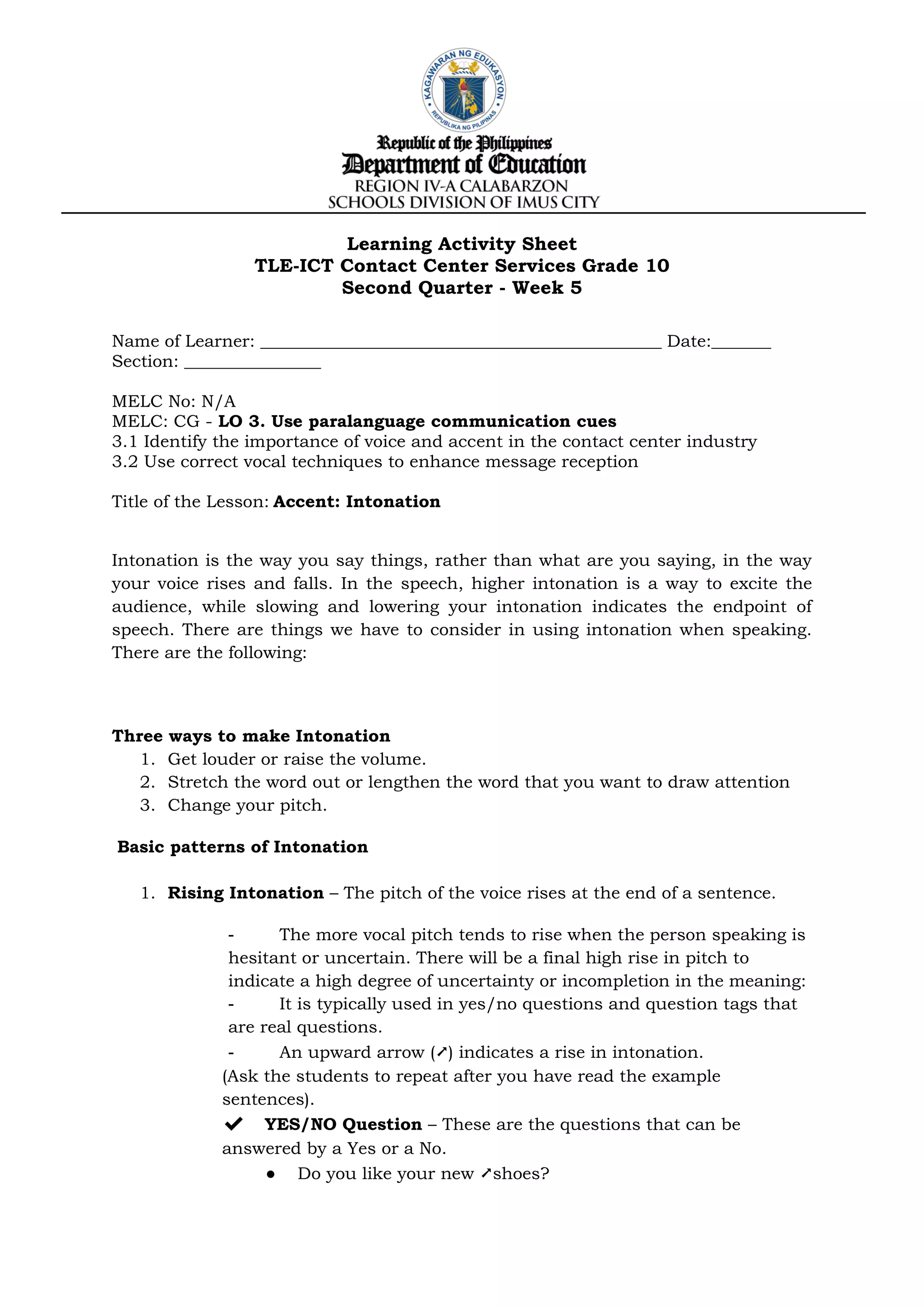This document provides a lesson on intonation for contact center services. It defines intonation as how the voice rises and falls when speaking. There are three types of intonation patterns - rising, falling, and rise-fall. The document provides examples of different sentences that demonstrate each intonation pattern. It includes two learning activities where students practice reading sentences aloud using the correct intonation patterns.



